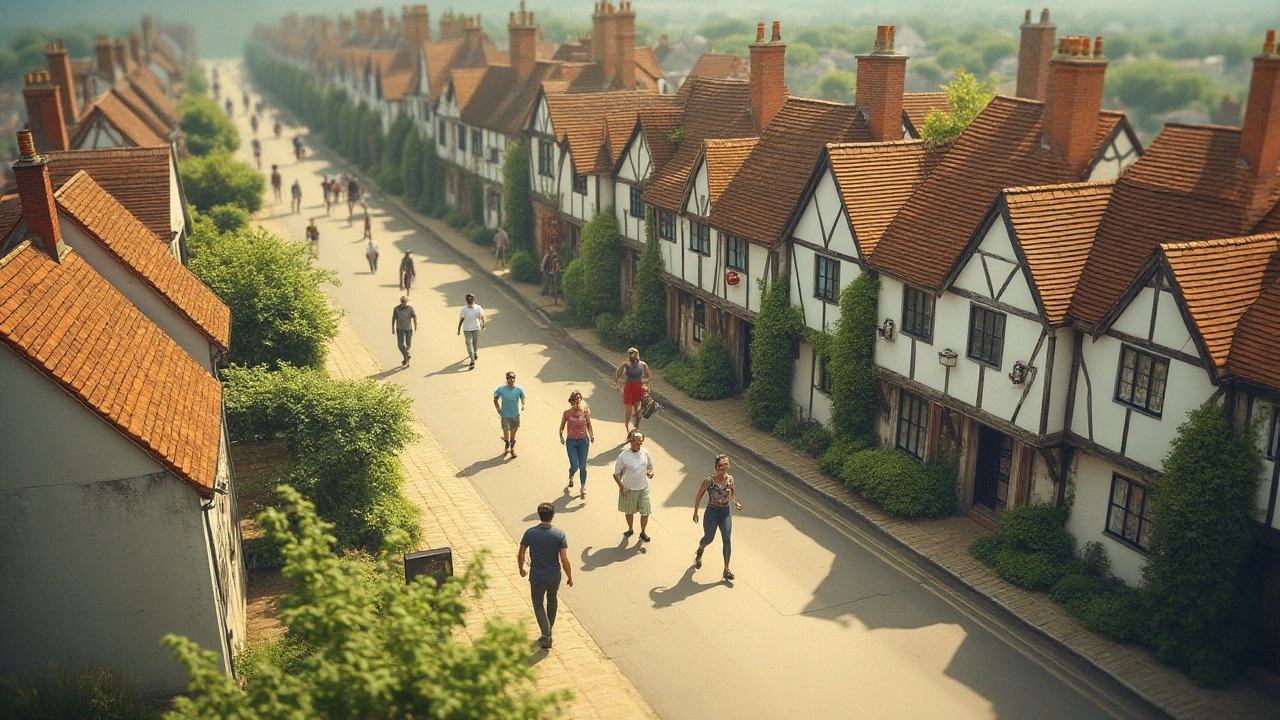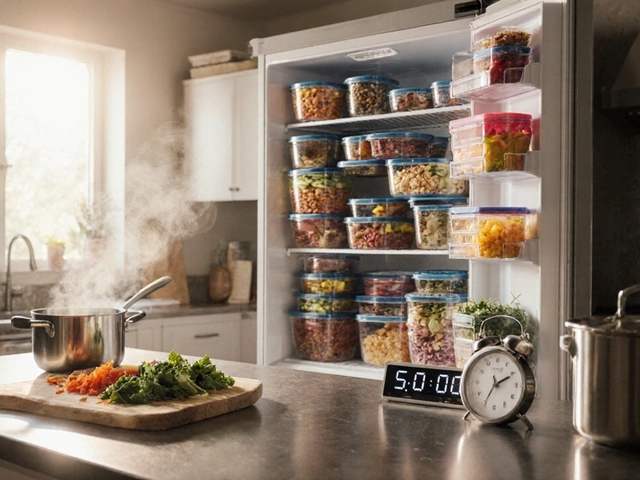Why spend hours in the gym when a satisfying stroll could do wonders for your waistline? Walking, one of the most underestimated forms of exercise, is a powerful ally in the quest to burn belly fat. By engaging multiple muscle groups and boosting your metabolism, a daily walk can melt away those unwanted inches without the strain of high-intensity workouts.
If the thought of home workouts conjures images of confusing equipment and intense routines, it's time to reconsider. Walking is accessible, adaptable, and most importantly, achievable for nearly everyone. With a few mindful adjustments and some added equipment for variety, your daily walk can become a cornerstone of your fitness regimen. Ready to lace up your sneakers and get moving? Let's explore how this simple habit can lead to remarkable changes in your body composition.
- The Science Behind Walking and Fat Loss
- Effective Walking Techniques for Weight Loss
- Incorporating Equipment for Enhanced Results
- Creating a Sustainable Walking Routine
The Science Behind Walking and Fat Loss
It's no secret that regular physical activity plays a crucial role in weight management and cardiovascular health, but can simply walking help you reduce belly fat? The answer lies in understanding how your body burns energy and removes fat.
At its core, walking is a moderate-intensity aerobic exercise that increases your heart rate and engages your core, legs, and arms. This activity stimulates caloric expenditure, which is the primary driver behind fat loss. When your body needs more energy than what you're consuming, it starts to tap into stored fat, leading to weight reduction, particularly of the visceral fat that tends to accumulate around the abdomen.
Research has elucidated the benefits of walking for fat loss. A study conducted by Harvard University found that participants who walked for at least one hour five days a week had a significant reduction in belly fat over time.
"Walking briskly for just 30 minutes a day can lower your risk of heart disease and help you maintain a healthy weight," notes Dr. JoAnn Manson, professor at Harvard Medical School.
The Role of Metabolism
Your metabolism is essentially your body's engine, determining how fast you turn calories into energy. Walking can stoke this engine, enhancing your metabolism even after you've finished your walk. This is known as the 'afterburn effect,' where your body continues to burn calories post-exercise.
Getting the Most Out of Your Walk
To maximize the fat-burning benefits of walking, consider these strategies:
- Intensity Matters: Maintaining a brisk pace where you can still talk but not sing ensures you're in the optimal heart rate zone for burning fat.
- Consistency is Key: Aim for at least 150 minutes of walking per week, as recommended by the CDC, to see noticeable results.
- Variation and Intervals: Integrate intervals or incline walking to challenge different muscle groups and avoid plateauing.
Remember, while walking is a potent tool for weight loss, combining it with a balanced diet and other forms of exercise amplifies your results. This harmonious approach ensures not only the loss of belly fat but also improvements in overall health and fitness.
Effective Walking Techniques for Weight Loss
While walking might seem straightforward, employing certain techniques can optimize this simple exercise for maximum belly fat reduction. Let's delve into strategies that transform a casual stroll into a powerful weight-loss session.
The Power of Pace
Walking at a brisk pace is crucial for burning calories and shedding fat. Aim for a speed that elevates your heart rate without leaving you breathless. An ideal target is around 3.5 to 4 miles per hour. This pace helps maintain a moderate intensity, pushing your body to utilize stored fats efficiently.
Incline and Interval Walking
Introducing variations such as inclines or interval walking can exponentially increase the benefits. Walking uphill or at an incline of 5% or more engages more muscle groups, especially targeting the glutes and core, which can help in reducing belly fat more effectively. Meanwhile, interval walking—alternating between fast-paced strides and a more relaxed pace—can elevate your metabolic rate even after your workout, enhancing fat loss.
Incorporating Home Workout Equipment
Equip yourself with adjustable ankle weights or a weighted vest for a more challenging workout. This added resistance requires extra effort from your body, increasing calorie expenditure. Additionally, investing in a treadmill can provide controlled environments where you can easily manage pace and incline.
Don’t forget about posture! Maintaining an erect posture with tight abs while walking ensures that your core remains engaged, further assisting in burning belly fat.
Tracking Progress and Setting Goals
To stay motivated, set achievable goals and track your progress. Use a fitness app or wearable technology to monitor steps, distance, and heart rate. Consider setting a daily step goal, starting at 5,000 for beginners and gradually increasing to 10,000 or more as fitness improves.
Weekly Walking Targets
| Experience Level | Steps per Day | Miles per Week |
|---|---|---|
| Beginner | 5,000-6,000 | 10-15 |
| Intermediate | 7,000-9,000 | 20-25 |
| Advanced | 10,000+ | 30+ |
Transform your walking routine from mundane to magical with these effective techniques. Commit to consistency, challenge your limits, and watch the inches melt away from your waist.

Incorporating Equipment for Enhanced Results
As you embark on your belly fat-burning journey through walking, adding a few key pieces of home workout equipment can significantly enhance your efforts. Such tools not only increase the effectiveness of each step but also introduce variety to keep things engaging. Whether you're a beginner or seasoned walker, equipment can provide that extra boost to ensure you’re maximizing your walking sessions.
Resistance Bands: A Flexible Friend
Resistance bands are lightweight and affordable tools that add an extra challenge to your routine. By incorporating them, you can engage more muscle groups, particularly your core, which in turn can accelerate belly fat reduction. To use them, wrap a band around your ankles or knees and continue with your walk. This additional resistance engages your glutes, hips, and thighs, thereby intensifying the workout's calorie burn.
Weighted Vests: Adding a Safe Load
For those looking to take their walking workout to the next level, a weighted vest is an excellent option. By wearing a vest during your walk, you increase the challenge on your cardiovascular system and muscle groups, which helps burn more calories and shed fat faster. Studies have shown that the added weight helps in engaging the core muscles not just for stability during the walk, but also for increasing the intensity of energy expenditure. When selecting a weight, start light and increase gradually to avoid strain.
Pedometers and Fitness Trackers: Staying Accountable
Staying motivated can sometimes be a challenge, but using a pedometer or fitness tracker can be a game changer. These devices offer real-time data on steps taken, calories burned, and even elevation changes. This feedback not only helps adjust your routine for maximum impact but also keeps you accountable. Aspiring to reach a daily step count becomes a fun goal, and by tracking your progress, you maintain motivation to trim unwanted belly fat.
Example Equipment Stats
| Equipment | Average Weight | Calorie Burn Increase |
|---|---|---|
| Resistance Bands | 0.5 - 2 lbs | 10-15% |
| Weighted Vest | 4 - 20 lbs | 12-25% |
Incorporating these items into your home workout gives a tangible boost to your walking routine, ensuring it remains both challenging and effective. As you experiment with equipment, remember to listen to your body and adjust as needed. Walking, strengthened by the right tools, can become a powerful ally in achieving your fitness goals.
Creating a Sustainable Walking Routine
Transforming walking into a lifelong habit requires more than just motivation; it involves crafting a routine that's enjoyable and sustainable. The process begins by identifying what you want out of your walking routine. Are you focused solely on reducing belly fat, or do you also wish to improve cardiovascular health and mental well-being? Clarity here will guide how you design your routine.
Set Clear Goals
Setting specific, achievable goals helps maintain focus and motivation. Consider goals such as "walk 30 minutes a day" or "reach 10,000 steps daily." These objectives should be tailored to your lifestyle and fitness level. Use a pedometer or a smartphone app to track your progress, which can provide a sense of achievement and encourage consistency.
Choose the Right Time and Place
Integrating walking into your daily schedule demands deliberate planning. Identify time slots in your day where you're naturally more energetic, whether that's a morning reboot or an evening wind-down. As for location, find an environment that suits you—nature trails for serenity or urban landscapes for stimulation. The key is choosing places that you can access easily and enjoy regularly.
Incorporate Variation
Prevent boredom by incorporating variety into your routine. Mix up your routes and vary the pace: alternate brisk walking with leisurely strolling. On certain days, enhance the challenge by incorporating stairs or inclines. Additionally, consider interval walking sessions where you switch between high-intensity bursts and rest periods.
Equip Yourself Properly
Comfort and safety during your walks are paramount. Invest in a quality pair of walking shoes that provide adequate support and cushioning, preventing injuries. Wear clothing that suits the weather, and remember sunscreen if you're outside. For those walking in dim light, reflectors or a light source are essential.
Create a Support System
Community can make a significant difference. Walking with a friend, family member, or a group can enhance enjoyment and accountability. If that's not an option, consider virtual walking clubs where you share goals and achievements with others online.
Sample Weekly Walking Routine
| Day | Activity |
|---|---|
| Monday | 30-minute brisk walk around the neighborhood |
| Tuesday | 20-minute interval walking with 1-minute fast bursts |
| Wednesday | 45-minute relaxed walk in a park |
| Thursday | Use stairs or hills for a 30-minute incline walk |
| Friday | Rest or light yoga session |
| Saturday | Group walk; 60 minutes scenically |
| Sunday | Free walk; choice of distance and pace |
Ultimately, creating a sustainable routine is about personalization. Listen to your body, adjust your plans as needed, and don't forget to celebrate your progress along the way. With thoughtful planning and commitment, walking can become an integral and rewarding part of your lifestyle.





